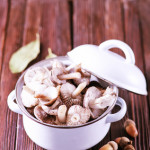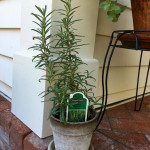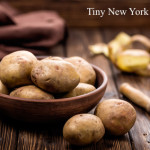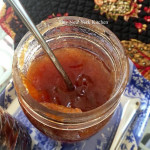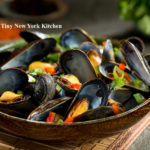“None of us are getting out of here alive, so please stop treating yourself like an after thought. Eat the delicious food. Walk in the sunshine. Jump in the ocean. Say the truth that you’re carrying in your heart like hidden treasure. Be silly. Be kind. Be weird. There’s no time for anything else.” – Christopher Walken
Make The Most Of Mushrooms
Keep fresh mushrooms in perfect condition after purchase. Here is what to do to make these gems last.
Keep The Original Store Packaging
You can’t see it, but the wrap on packaged mushrooms actually has tiny holes that prevent damaging condensation and gases from building up. You can, and should, store commercially grown mushrooms (presliced or whole) in their original container and wrap in the refrigerator, they will keep up to one week.
Keep Moisture At Bay, Wrap Loose Mushrooms In Dry Packaging
Storing mushrooms in a damp towel will shorten the length of time they stay fresh. Instead, refrigerator loose mushrooms in a brown paper bag; it will absorb any moisture and allow them to breathe. A partially opened ziplock plastic bag will also work.
Avoid The Crisper
The refrigerator’s vegetable bin is a moist place, not a friendly area for mushrooms. Instead, keep them in a spot where air can circulate, like an open shelf.
Keep Mushrooms Away From Pungent Foods
Mushrooms can take on the flavors of strong foods that are stored nearby. Keep them away from onions, garlic, and other foods with strong odors.
Rinse With Water
Clean mushrooms under cool, running water right before you’re ready to use them; then pat dry. It’s a myth that mushrooms easily absorb water, but if they’re rinsed too far in advance, they will discolor and deteriorate from the moisture. Cultivated mushrooms grow in sterilized compost, so you can also clean them by simply brushing any bits of dirt with a clean damp towel.
www.tinynewyorkkitchen.com
“Work With What You Got!”
© Victoria Hart Glavin Tiny New York Kitchen © 2016 All Rights Reserved
Growing herbs make cooking so much better. When the weather turns cold I bring them inside to my kitchen so they don’t freeze. Tonight I’m making grilled rosemary bone-in pork chops.
September
September is a wonderful time for enjoying the beautiful array at local farmers’ markets. September is a delightful time for gathering ingredients that will showcase fleeting flavors of summer. A walk among colorful baskets filled with fresh produce is incredibly inspiration.
Blazing scarlet tomatoes, sun-sweetened and fattened from their time on the vine, are joined by zesty green, bright yellow, and almost purple-colored varieties. Turn this beautiful rainbow into a final summer tomato salad by simply cutting thick slices of each colorful variety of tomato, and arranging them on a big platter. Drizzle the slices with olive oil and balsamic vinegar, sprinkle with a bit of sea salt, and finish the dish with finely minced basil.
Fill your shopping cart with crisp cucumbers, glossy purple or creamy white eggplant, pale green or buttery yellow summer squashes, string or wax beans, spicy jalapeno peppers, fragrant peaches, lush melons, sugary corn on the cob and great bunches of finely scented fresh herbs.
As September evenings grow quietly cooler, take pleasure in preparing dishes that feature these ingredients, such as nutmeg-scented roasted peaches, a delectable eggplant parmesan, velvety corn soup, garlic string beans or summer squash stuffed with ground lamb or turkey, breadcrumbs, fresh basil, oregano and parsley, cinnamon and bit of cheese. Cucumbers can be turned into simple refrigerator pickles, jalapeños can be roasted on the grill and packed away in the freezer, ensuring that a bit of summer will still be served as the season marches on.
There is also a hint of fall to be found at the farmers’ market. While all of the summer crops are still available to be savored, the new season is sneaking in. Freshly dug potatoes, dark purple plums, crisp early apples, succulent pears, Brussels sprouts, earthy mushrooms, carrots, cauliflower and kale will provide culinary creativity for weeks to come.
Cooking and eating with the seasons is the most excellent and efficient way to introduce high quality nutrients into the body. When we enjoy what nature has prepared for us, we are giving our bodies the gift of exceptionally luscious flavor, along with important healing properties. I can’t think of a better way to prepare a delicious life.
www.tinynewyorkkitchen.com
“Work With What You Got!”
© Victoria Hart Glavin Tiny New York Kitchen © 2016 All Rights Reserved
5 Ways To Use A Vegetable Peeler
The humble vegetable peeler has hidden talents.
Easily Peel Fruit: To peel soft fruits and vegetables, like tomatoes and peaches, you usually have to briefly dunk them into boiling water. Using a good vegetable peeler is so much easier and faster. Look for peelers with serrated blades for the best results and select not-too-ripe fruit.
Shaved Cheese: Give salads, pastas and roasted vegetables a restaurant-style finish by garnishing with generous amounts of shaved Parmesan or pecorino romano cheese.
Vegetable Pasta: Shave long strips of zucchini, carrots (even sweet potatoes and squash) to transform them into pasta substitutes. Serve raw or briefly steamed with your favorite sauce, or toss with a vinaigrette for a fresh and nutritious salad.
Spreadable Butter: Is there anything worse than trying to butter toast or bread with rock hard butter straight from the fridge? Use a vegetable peeler to scrape off thin and perfectly spreadable butter ribbons.
Chocolate Curls: Peel the edge of a slightly softened chunk of chocolate to create curls, or the flat surface of very cold chocolate to make shavings. Keep your creations in the freezer and use to garnish cakes, pies, puddings and seasonal fruit.
www.tinynewyorkkitchen.com
“Work With What You Got!”
© Victoria Hart Glavin Tiny New York Kitchen © 2016 All Rights Reserved
Lately I’ve been working in my kitchen as if it were a creative kitchen laboratory. The kitchen is really a food laboratory isn’t it? I’ve begun to add more science-like tools to my collection of cooking equipment. This week I purchased a bunch of beakers in various sizes. I use them as measuring cups as well as a place to hold liquids and chopped things. I’m not certain exactly why this makes me so joyous, but it does.
“Work With What You Got!”
© Victoria Hart Glavin Tiny New York Kitchen © 2016 All Rights Reserved
I had a bowlful of organic peaches ripening fast and a lime rolling around in the refrigerator and wondered how this combination would taste together. This morning was the first time that I tried it on toast and I am surprised at how delicious it is. I think that I’ll try making more over the weekend.


